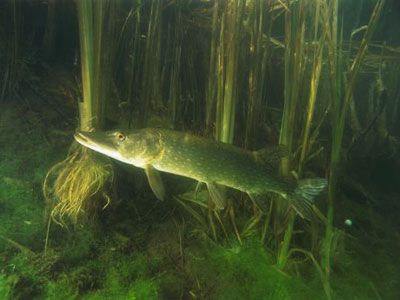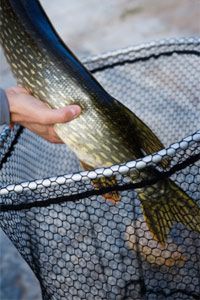Every species needs to reproduce, right? Pike are no exception. And some of the best fishing can happen during this annual spring ritual. Luckily, all you need is your tackle box, pole and sense of adventure. They'll do all the work, and you can reap the rewards.
During pre-spawn, pike migrate to their favorite spawning waters. Once there, male and female pike swim side by side. As they coast along, the males entice females to release their eggs by nudging the females' abdomens with their tails. The males release clouds of seminal fluid called milt all around the females, increasing chances of fertilization. Pike can lay between 25,000 to 225,000 eggs [source: Bucher.] That's a lot of eggs -- and it means a lot of eager spawners for you to catch.
Advertisement
Eggs attach to vegetation and, depending on water temperature, can take anywhere from two to four weeks to hatch. Females do not care for their young and leave the area soon after depositing their eggs. Young pike feed on their own yolk sacs for their first week and then move onto eating small plants and animals while they develop scales and fins. Growth rates vary depending on location and food sources.
After spawning, females begin feasting. They will eat any fish that fits in their mouths, including their male counterparts [source: Pikezander]. Because they are so hungry, fishing right before and after the spawn will help you to snag the big females. In this article, we'll discuss when and where pike spawn, and techniques for fishing during this exciting time.
Advertisement














